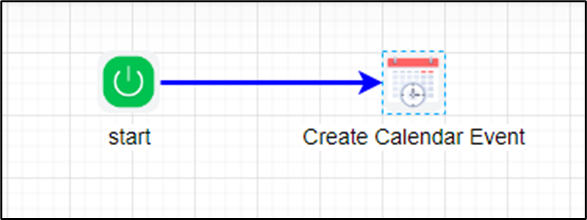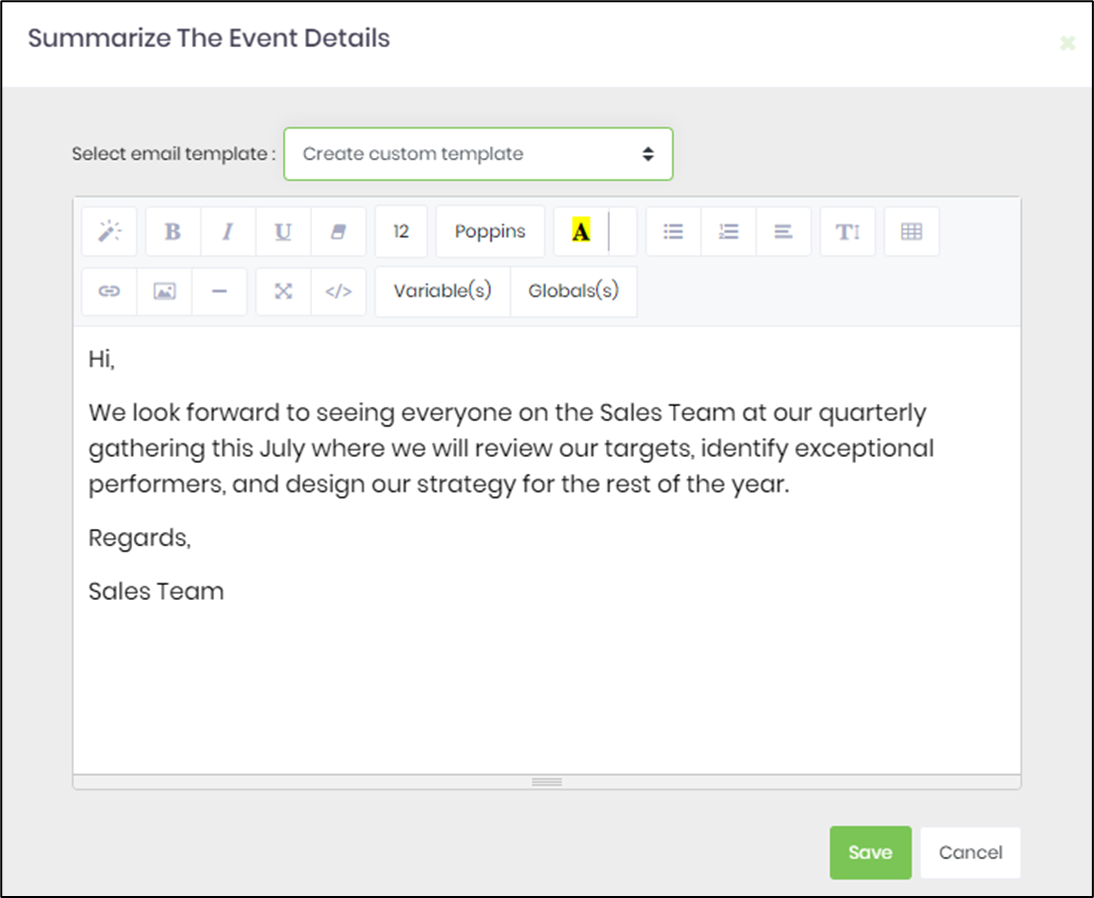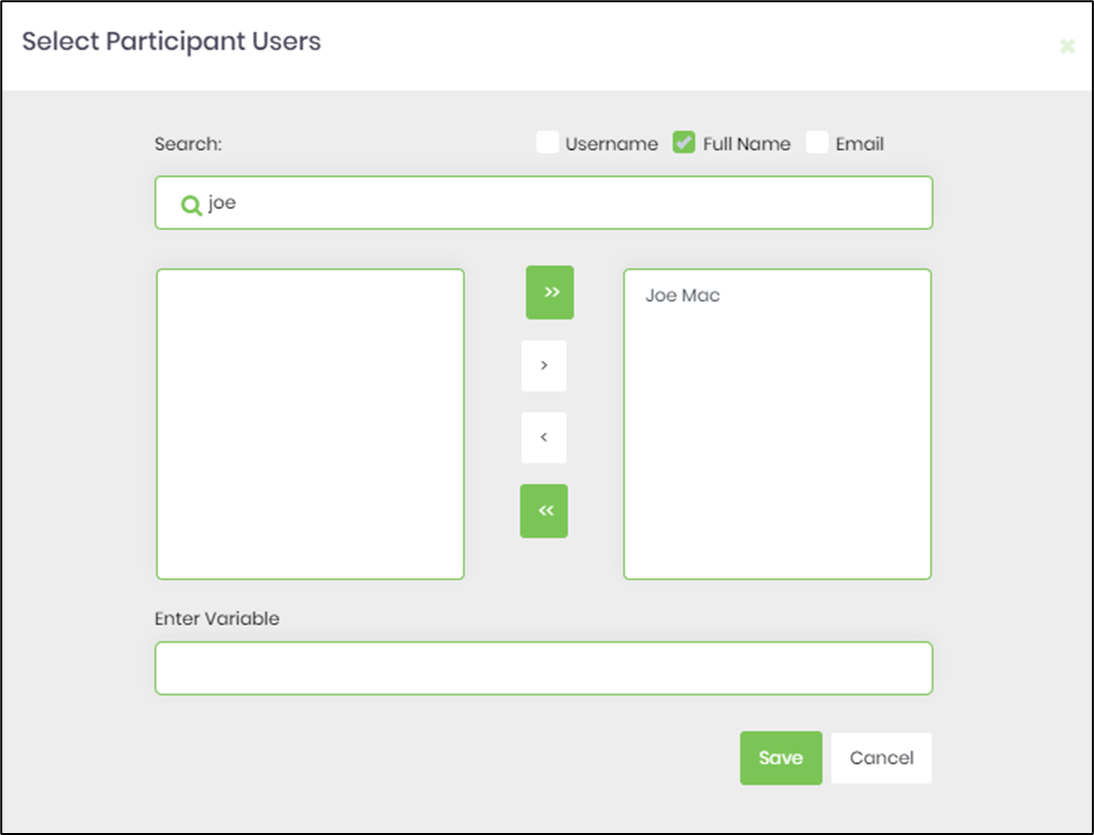createCalendarEvent Step
Description:
This step creates an iCal calendar file.
Inputs
- beginDate – Event begin date and time
- endDate – Event end date and time
- timezone - Select time zone
- description – Description of the event
- summary – Summarize the event details
- location –Event Location
- emailTo –Select participant users
- emailAddresses - Email addresses of participant users
Returns
- True – step executed successfully
- False – step failed to execute
Usage:

Example:
Let’s build and execute the “createCalendarEventDef” example.
- Create a new process definition called “createCalendarEventDef” and open the definition in designer mode.
- Drag a "createCalendarEvent" step to the canvas.
- Connect the dots between the “Start” and "createCalendarEvent" steps, as shown above.
- Click the "createCalendarEvent" step to configure its "Required" properties. Provide a name for the step. Please provide the event's start and finish dates and times. Select the time zone from the dropdown list. Provide a description text for the event. Provide event location information. Click the Save button. Note: Click the "AI Predict" button for the Copilot to add new process steps that match your process description.

- Click the button to provide the event details summary info. After summarizing the event details, a Template popup will open. Fill out the template design according to your requirements, or use one of the existing templates from the dropdown.

- Click the button to select participant users.

- Click the "createCalendarEvent" step to configure its "Optional" properties. Provide the email addresses of external participant users (separated by semicolons).

- The “Logging” setting configuration is necessary for documentation and also measures the workflow progress and the percent complete. This is achieved by configuring the step state and percent fields individually, as shown below. Configure the “Logging” using the following properties.

- Save the process definition, create a new instance, and then execute it. Render the process instance. Click the process step to view the properties. The step should create an iCal calendar file and route it to the participants using the email queue.
Definition Sample:
You may download the sample definition(s) from the link here and later import them (drag-and-drop) to your FlowWright Process Definition (XML file) or Form Definition (HTML file) page.
Note: Please verify and complete the process steps for any missing configurations, such as file path references and database connections, after import. Then, save the definition to confirm the changes.
Click here to download the sample file.